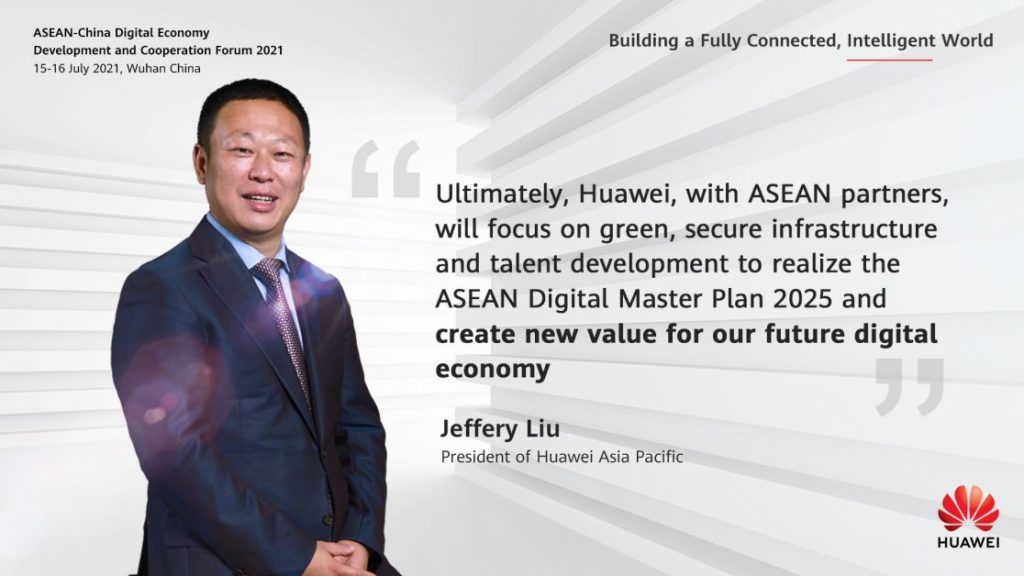Global leading ICT technologies provider Huawei will leverage its digital power innovations to enable ASEAN’s cooperation on climate change and green development, said Jeffery Liu, President of Huawei Asia Pacific at the online ASEAN-China Digital Economy Development and Cooperation Forum 2021 on Friday.
Climate change and environmental issues are becoming global challenges. Though carbon emissions declined over the past year due to the economic slowdown and worldwide lockdowns, emissions are rapidly rebounding as economies reopen. Shifting to a circular economy and achieving sustainable development is now a common goal for all countries.
Potential climate change has a significant regional impact with six of the 20 most vulnerable countries in the world being ASEAN member states. ASEAN has taken actions to address climate change through various environmental, economic and social activities over the years. Thailand, for example, has set a target of reaching peak carbon emissions in 2030 and then achieving net zero emissions in 2065.
“Globally we need a green industrial revolution with the goal of carbon neutrality. As the digital economy grows, accelerating emission reduction could also help countries to manage the risk of trade barriers and secure more free trade agreements,” said Jeffery Liu.
ICT technologies are important enablers of energy conservation and emissions reduction in other industries. It is estimated that the reduction in carbon emissions in other industries enabled by ICT technologies will be 10 times the amount of carbon emitted by the ICT industry itself.
“Huawei has been leveraging its extensive experience in power electronics and energy storage as well as technical expertise in 5G, cloud, and other innovative technologies, to develop its digital power business and provide digital power solutions for different industries,” said the Huawei Asia Pacific President.
To promote renewable energy, Huawei has deployed its digital power solutions in more than 170 countries and regions, serving one third of the world’s population. As of December 2020, these solutions have generated 325 billion kWh of electricity from renewable sources, and saved a total of 10 billion kWh of electricity. These efforts have resulted in a reduction of 160 million tons in CO2 emissions.
In Singapore, for example, Huawei FusionSolar Solution has supported Sunseap Group, a solar energy solutions provider, to build one of world’s largest offshore floating Photovoltaic (PV) farms. With 13,312 solar panels, 40 inverters, and more than 30,000 floats, this five-hectare sea-based solar plant is estimated to produce up to 6,022,500 kWh of energy per year, supplying enough power for 1250 four-room public housing flats on the island and offsetting an estimated 4258 tons of carbon dioxide.
“Huawei is committed to promoting green integrated ICT solutions to help other industries conserve energy and cut emissions,” said Jeffery Liu, “We will cooperate with ASEAN to minimize the carbon footprint by leveraging clean power generation, electric transportation, and smart energy storage, for an energy-efficient, eco-friendly low-carbon society.”
Source: Carl Byoir & Associates
